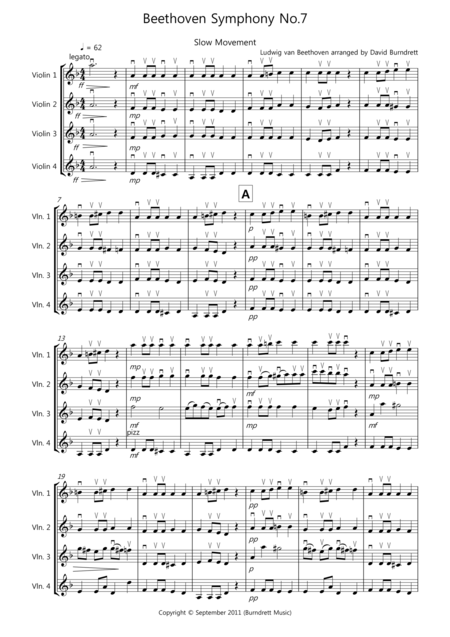
The occasion of that world premiere was a gala benefit concert for Austrian and Bavarian soldiers wounded in the Battle of Hanau, which had occurred a few weeks earlier. “All persons, however they had previously dissented from his music, now agreed to award him his laurels,” wrote Anton Schindler, Beethoven’s first biographer. When Beethoven’s Seventh Symphony was first performed in the large hall of the University of Vienna on December 8, 1813, it was immediately hailed as a sensational achievement, a judgment maintained continuously down to the present day. “The sound itself creates the actual and personal physical contact: in sports language, it ‘tackles’ you, so that you will not quickly return to normal,” writes Klaus G. Roy, former program annotator for the Cleveland Orchestra. The Seventh requires only a modest-sized orchestra (pairs of woodwinds, horns, trumpets and timpani in addition to strings), but the sheer visceral impact it makes virtually guarantees a successful performance by even the least accomplished of ensembles. The Ninth may be the most beloved today (it was not always so), but it requires vastly larger forces than the Seventh, well beyond the means of many amateur and semi-professional orchestras. The Seventh may well be the most frequently played of Beethoven’s nine symphonies, the Fifth notwithstanding. Here’s to the new season, to the new hall and to a bright future for this wonderful, wonderful orchestra!īeethoven Symphony No.

For 50 years, you have been instrumental in thousands of performances in this space. For 50 years, you have listened and responded. And it is our great pleasure to share this musical Everest, this cornerstone of artistic output, with you, our dear audience. It is my great privilege to share this new stage with the incomparable musicians of the National Arts Centre Orchestra, who will interpret and form every note of this cycle with passion, detail, verve and love. I can conceive of no better way to explore every inch of this new space than with a fresh take on this most complete and all-encompassing of symphonic cycles. I cannot think of a state of mind that is not in one way or another expressed through this music.Īs we begin our 50th anniversary season, we also begin our next artistic chapter in a reinvigorated Southam Hall with its glorious new shell and acoustic. Joy, passion, warmth, mourning, hope, loss, melancholy, peace, victory, struggle, solidarity, desperation, reverence, simplicity. And why? In order to express, through the abstract language of music, the most fundamental and tangible shared emotions of humankind. He demands rigour and attention of performers and listeners alike. He challenges the orchestra to be its best. From the classical strains of his first to the universal themes of his last, there is not a single note out of place, not a single bar wasted, not a single idea unexplored. Over the course of these nine masterpieces, Beethoven evolved not just his own music, but revolutionized all of music in a way and at a pace hitherto unprecedented. Beethoven is exceptional through him being able to control our perception of musical time.The Beethoven symphonies are central to the life of musicians and audiences. Tovey says "It is so far as romance is a term which no two people understand it in quite the same way." The finale is powerful through the use of the instruments being used 'in keeping with the potential sonority of their inherent character', with a heightened sense of activity through the fluent and quick passing of phrases among the instruments. Some say it is romantic, due to the "swift and unexpected changes and contrasts". Each movement here is animated by its own distinctive rhythm, making it a continuous celebration of joy. It is the underlying principle, as well as being the foreground. Rhythm is very important, and its repetition and persistence is what makes this symphony so compelling. Has an overriding sense of enthusiasm and excitement.

Can be viewed as abstract art, due to the melodic shapes, and the different relationships between the instruments. Intellectual focus used, as there are variants of the main rhythm everywhere, it's the life and pulse of the symphony.

Uses rhythm and tonality to convey emotion, drive, almost a visceral energy at times to sense the symphonic drama developing.


 0 kommentar(er)
0 kommentar(er)
